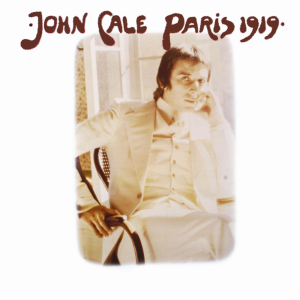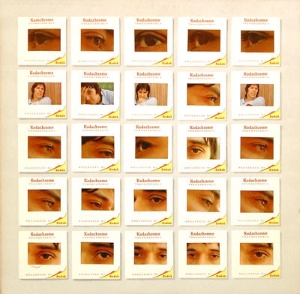
Barely a year after people first heard him on the radio, Joe was disillusioned with the music business. Three albums in two years was a tall order for anyone, but he could barely contain his disgust with a note on the inner sleeve of
Beat Crazy that literally questioned why he bothered.
The album was a quest to “make some sense of rock and roll”, and for the most part, it’s a departure from the pogo-happy sound of his previous albums, embracing the more moody, piano-based pieces. The title track doesn’t fit into that category, beginning with a scream and placing the complaints of the previous generation squarely in the present. Bassist Graham Maby sings the verses, and Joe responds with the edgy choruses. There’s a split second before “One To One” takes over, a pretty lament about a modern relationship. Here the piano and organ answer each other nicely. This in turn switches to the moody dub of “In Every Dream Home (A Nightmare)”, a peek behind the curtains of a city neighborhood. “The Evil Eye” is closer what people wanted, continuing almost seamlessly in “Mad At You”, which at over six minutes almost seems like an extended remix. (The video features, along with a wonderful use of baked beans, the first-ever glimpse of Joe in drag.)
As evidenced on side one, part of Joe’s lyrical arsenal included studies of juxtapositions and paradoxes, where things aren’t what they seem and double standards are exposed. “Crime Don’t Pay”, which only includes about a minute of singing between its lengthy intro and outro, demonstrates one example of the unfairness of modern society, while “Biology” questions the loose fidelity of bands on the road versus the women they left at home. “Someone Up There” updates the old idea of boy-meets-girl-loses-girl. “Pretty Boys” is not an answer to “Pretty Girls” from his first album, but a rant against pop idols and talking heads on TV. Most people probably skipped over “Battleground”, a blatant imitation of Jamaican “dub poet” Linton Kwesi Johnson, but hopefully they stuck around for “Fit”, the best song on the album. For not the last time, Joe questions what makes a man a man, throwing in some racial issues, over a fantastic band performance that makes for a fine finale. (And not for the last time, his own sexuality would be subject to conjecture.) This would be the perfect soundtrack for a scene in an ‘80s coming-of-age film where the protagonist storms out of a house, slamming the screen door in time to the opening drum beat, and driving his car all night pondering his predicament.
Inevitably, Beat Crazy doesn’t quite satisfy, and much of this can probably be put down to having such a full recording and touring schedule. A change was in order, and he would soon make a striking one. (This album has been ignored in this century, after others were expanded. Should anyone decide to, it would behoove them to add the B-side “Enough Is Not Enough”, as well as the standalone “The Harder They Come” single—yes, the Jimmy Cliff song—and its B-sides, “Out Of Style” and “Tilt”. Each has made it to CD over the years, but they belong here, and would be welcome.)
Joe Jackson Band Beat Crazy (1980)—2





:format(jpeg):mode_rgb():quality(90)/discogs-images/R-5951388-1407193994-3473.jpeg.jpg)
